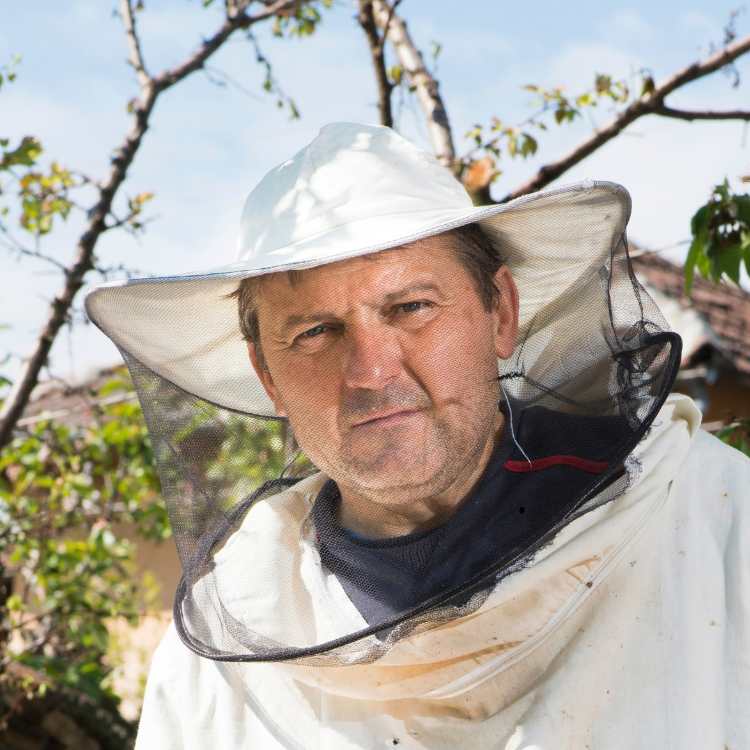If you have ever spotted a large, buzzing bee hovering near your wooden porch or fence, chances are you have run into a carpenter. Quite easy to confuse with the bumblebee, however, their behavior and lifestyle are entirely different. And since the misconception is so widespread, it is quite common to see people ask: Do carpenter bees make honey? The short answer? No. The long answer? Let’s explore it in more detail.
What are carpenter bees?
Before moving to the crux of things, we first need to understand what exactly are carpenter bees. Carpenter bees belong to the Xylocopidae family and are known for their habit of drilling into wood to create nests. Thus the name. And unlike honeybees, that live in colonies, carpenter bees are solitary with each female making her own tunnel in wood to raise her offspring independently. This solitary lifestyle is your first clue in solving the question: Do carpenter bees make honey? Because honey production is not just about collecting nectar. It is about teamwork, storage and colony survival and carpenter bees don’t need to worry about any of it.
Why don’t carpenter bees make honey?
So, do carpenter bees make honey the way honeybees do? No. Honeybees produce honey as a long term food reserve for the colony. They need it to survive winters by feeding thousands of hungry workers, drones and young larvae. Carpenter bees do not have colonies so they don’t rely on long term food storage because they don’t have a hive full of mouths to feed. Instead the female will collect pollen and nectar to feed themselves and stock their nests. The nectar does not get turned into honey. Instead it is left as is as a direct food source for the larvae. There is no comb, no honey pot and certainly no honey harvest coming out of those wooden tunnels.

Nectar collectors, not honey makers
Still, do carpenter bees make honey in any form at all? Some might argue that they make a simplified or starter version of honey. But it is not the case. Carpenter bees collect nectar using their long tongues (proboscises) which they dip into flowers like straws. The nectar gives them energy for flight and nest building. They also gather pollen to feed their young which they carry with their leg hairs. This mix of nectar and pollen, sometimes, called bee bread, goes into the chambers where the larvae will feed until they mature. But again, that is not honey.
Comparing bee worlds
Let’s stack it side by side: honeybees vs carpenter bees. Honeybees live in colonies that can contain up to 60,000 individuals. They build intricate wax combs to store honey and rely on it during food-scarce months.
Carpenter bees? One female, one tunnel, maybe a few chambers. Each chamber has an egg and some nectar pollen mix. When the larvae are grown, the job is done. Do carpenter bees make honey the way honeybees do? Not even close.

The real value of carpenter bees
Now, just because carpenter bees do not make honey, it does not mean that they are freeloaders. They are serious pollinators. In fact, carpenter bees are big and strong. And they can perform something called buzz pollination. Carpenter bees vibrate flowers to release pollen that other bees can’t reach. Tomatoes, eggplants, and blueberries all benefit from buzz pollination.
The nesting habits of carpenter bees
Here’s another fact: carpenter bees don’t eat wood. While many people assume they eat the wood like termites, carpenter bees only chew through the wood to create a tunnel. None of the wood is digested. Plus the damage to the wood is only cosmetic and not structural. Their perfectly round entrance holes might look dramatic, but the bees are just doing their version of house building.
Still in case, you are not a fan of bees buzzing around your deck, untreated or exposed wood is like prime real estate for them. Paint it seal your wood to make it look less attractive. But if you see them around, know they are not there for honey.

Why the confusion?
The confusion usually comes down to looks. Carpenter bees resemble bumblebees, which do live in colonies and store small amounts of honey for short term use. But even bumblebee honey isn’t what you find in jars at the store. Real honey production on a commercial level comes almost entirely from honeybees. So the answer do carpenter bees make honey get tangled in that visual similarity. But biology does not lie. These are two very different bees, living two very different lives.
Final word
Let’s wrap it up. Carpenter bee do not make honey. They raise their young in carefully carved wooden tunnels. But honey? That is not their thing and that is okay. Carpenter bees deserve recognition not for making honey but for what they do contribute-pollination, biodiversity and an up-close look at one of nature’s more fascinating insects. And remember, no matter how many times you ask, the answer to do carpenter bees make honey will always be no. But they sure make a difference.
Ain’t it fun learning about the fascinating world of bees? Explore their magical world with our full blog here.




